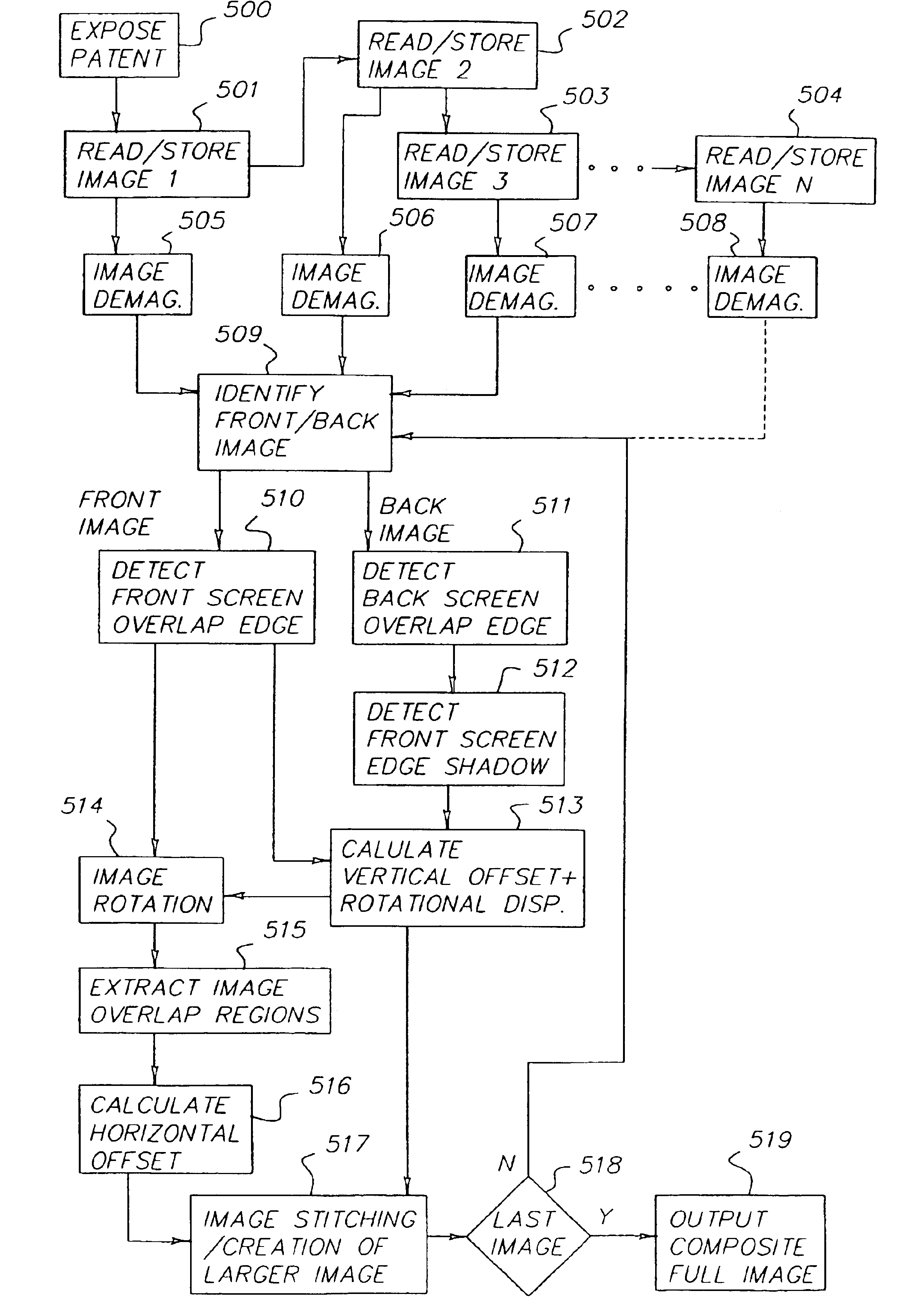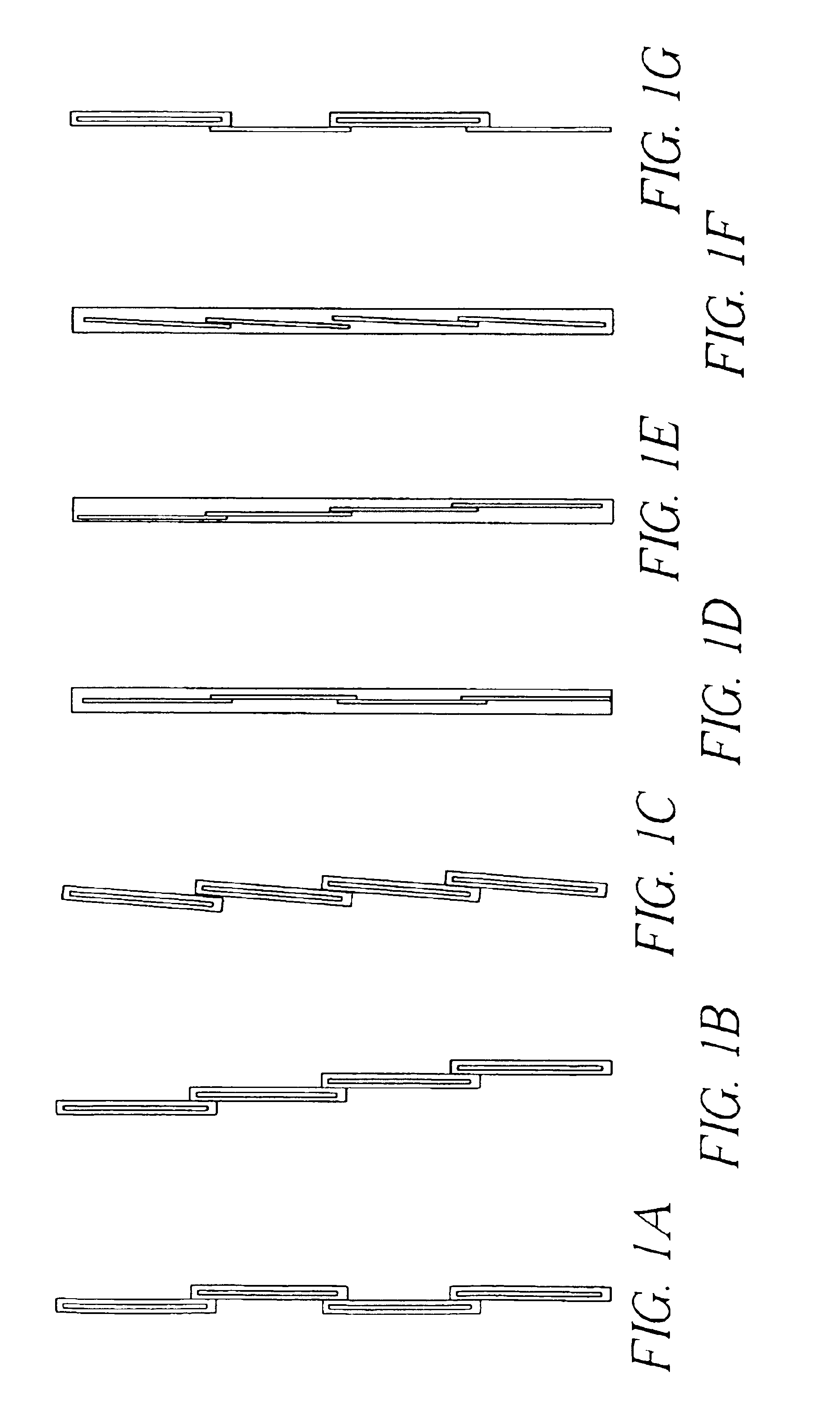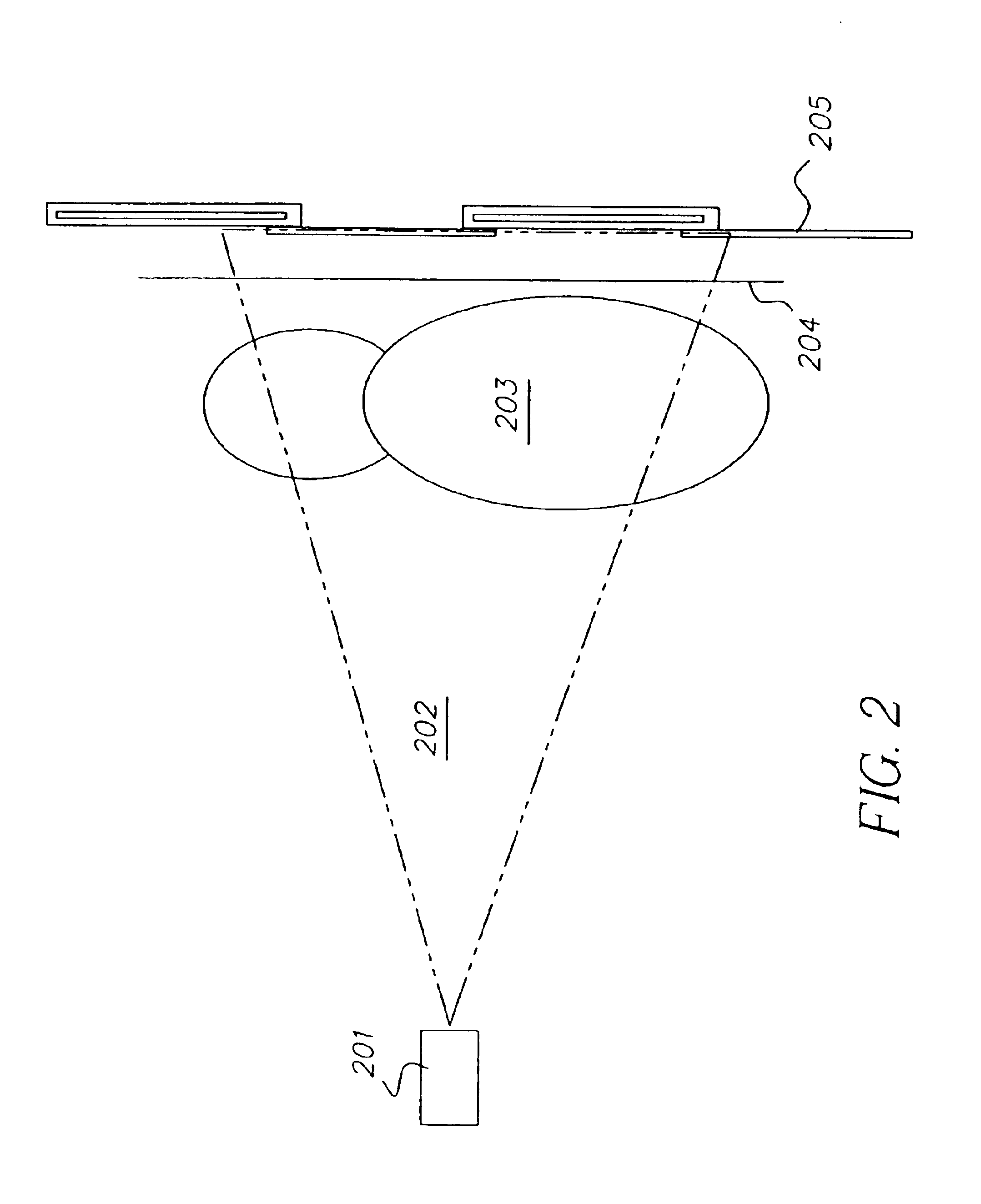Method for stitching partial radiation images to reconstruct a full image
a partial radiation and image technology, applied in the field of digital radiography, can solve the problems of limited size of digital detectors, affecting the quality of digital images, and imposing shadows on cassettes, and achieve the effect of improving image quality and high degree of geometric accuracy
- Summary
- Abstract
- Description
- Claims
- Application Information
AI Technical Summary
Benefits of technology
Problems solved by technology
Method used
Image
Examples
Embodiment Construction
[0030]In general, the present invention relates to the radiographic imaging of an elongated object such as the full spine, e.g., for diagnosing scoliosis, or leg of a human subject.
[0031]US Patent Application by Brahm, Odea, Rogers, Wang proposes a method that is a hybrid between the cassette stacking and storage phosphor screen stacking methods. As shown in FIG. 1G, cassettes and storage phosphor screens are placed in a partially overlapping and alternating arrangement with the screens always positioned in front of the cassettes. This method eliminates the cassette metallic frame shadow from the acquired images, and reduces the number of storage phosphor screens that need to be removed out of and to be replaced back into cassettes.
[0032]When an x-ray exposure is taken with any of the cassette / phosphor screen setups shown in FIGS. 1A-1G, a plurality of sub-images is obtained, each of which bears a partial image of the elongated object. Because the phosphor screens are the fundamenta...
PUM
 Login to View More
Login to View More Abstract
Description
Claims
Application Information
 Login to View More
Login to View More - R&D
- Intellectual Property
- Life Sciences
- Materials
- Tech Scout
- Unparalleled Data Quality
- Higher Quality Content
- 60% Fewer Hallucinations
Browse by: Latest US Patents, China's latest patents, Technical Efficacy Thesaurus, Application Domain, Technology Topic, Popular Technical Reports.
© 2025 PatSnap. All rights reserved.Legal|Privacy policy|Modern Slavery Act Transparency Statement|Sitemap|About US| Contact US: help@patsnap.com



